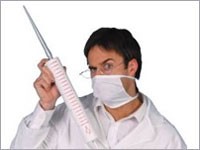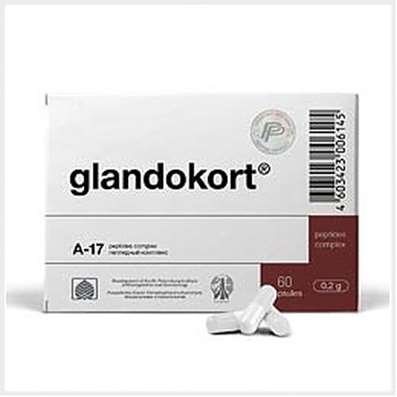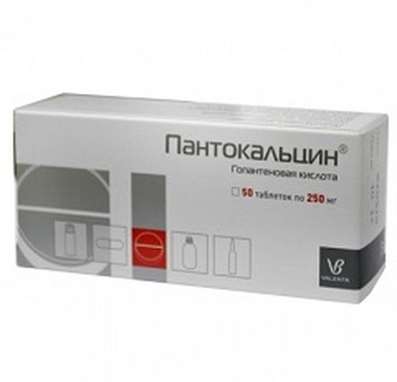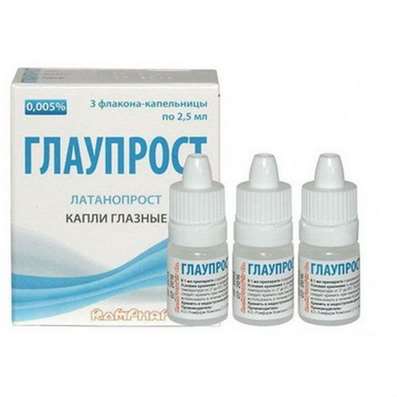The bitter taste of Haloperidol
14 Dec 2016
When in the early fifties in psychiatric practice Chlorpromazine (Aminazine) was invented, it was a breakthrough. This was the beginning of a new era in psychiatry - the era of neuroleptics. Radically change the tactics of the patient: Now many people could not hold in hospitals for years and decades, and now it was possible to appoint or nominate treatment and to let them go home! Not all, of course, but many, very many. However, as some adherents of pure science, with the advent of chlorpromazine clinics disappeared last real mentally ill - ostensibly so neuroleptics changed the picture of the disease. But you know these inveterate humanists burdened with a history - they do not feed bread, let alone generate medical diagnostic decapitation. Or catch a representative sample of the pygmies and chimpanzees, and then forced to live together for a long time, passionately and presumably happy - if only to look in the children who will go.

Following aminazine appeared a number of neuroleptics, more selectively acting on different types of psycho-symptomatic: for example, Stelazine (aka triftazine) was good for the relief of delirium, haloperidol - to deal with hallucinations. But, as is usually the case with any medication, after a brief period the fitting laurels panacea got the first taste of tar. Patients antipsychotics liked far less than designating their doctors. Why? It's all in one of the side effects - neuroleptic syndrome.
Strictly speaking, neuroleptic syndrome, or neurolepsy - this is a special version of the so-called extrapyramidal disorders (the term comes from neurology, extrapyramidal system controls the movements of the person, supports muscle tone and body posture, without using the cerebral cortex and its pyramidal cells). These disorders can be caused by disease, or side effects of some drugs, particularly those that affect the concentration of the agent (one of many) the transmission of nerve signals - dopamine. It could be some of the medicines for the treatment of parkinsonism, and calcium channel blockers used in cardiology, and not least neuroleptics. And since these should be applied very widely, that neuroleptic syndrome may well be isolated and treated separately.
It is this side effect (or rather, a whole bunch of them), neuroleptics do not like mental patients, it is this syndrome are regarded as a punishment for what else fault, and that it is put on the form, remembering punitive psychiatry. How it is taken, and what appears?
The exact mechanism of it is not yet fully understood. It is thought that antipsychotic drugs, inter alia, to block receptors in the subcortical nuclei responsive to dopamine. This, in turn, leads to an increase in the synthesis of dopamine in the body (like this man, getting used to the smell of his cologne, use it more and more, up to wash them), and its surplus triggers a painful process.
The process itself can occur
in acute form: given medication - doubled over, canceled - it passed;
in a protracted form: given the drug for a long time, then they canceled, and the side effects last for more weeks or even a month or two;
in the chronic form, when neurolepsy does not disappear even after the abolition of neuroleptics;
in the malignant form, with fulminant development and worsening of symptoms and often fatal.
Neuroleptic syndrome is expressed in the following forms, which can either exist in isolation or combined with each other, sometimes quite bizarre:
Neuroleptic parkinsonism. The patient feels stiffness in all muscles of the body, its movements become stingy, inhibited, arms slightly bent at the elbows and tense, mincing gait, shuffling. More or less constantly shaking hands; seated knees start to shake - is barely noticeable, then, as if the patient is their specially throws up. Sometimes trembling lower jaw, which creates the feeling that the patient often-often chews (rabbit syndrome).
Dystonia. Often acute, caused by the current intake of neuroleptics, and later that occurs after several years of continuous treatment and continuing long after the abolition of neuroleptics. What are the symptoms? Remember how cramped leg muscles if they are to serve, or if during the voyage of their overworked. Now imagine that just as twisting the back muscles, causing the body to bend. Or neck, because of which the head leads the side or back throws. Or chewing muscles. More common so-called oculogyric crisis when, in addition to the tilting of the head, eyes rolled upward as oculomotor muscles cramped.
Neuroleptic akathisia. The patients themselves called restlessness. Always want to change the position, as in the one that has just finished, is already uncomfortable. But new does not bring relief. Perhaps stand, look like? A little better, but then I want to sit down. Again uncomfortable. Lie? Yes, impossible! Sitting on a chair, the patient fidgets, swings, shifts one foot to the other and vice versa, fastens with buttons and unbuttons, fingering - a second of rest.
Neuroleptic malignant syndrome. It is found, fortunately, rare. Develops quickly: sharply raises the temperature to 38 Celsius and above, darkened consciousness up to coma, the patient is bound, all the body's muscles are tense, sweating heavily, and heavily breathing, heart rate often, the heart begins to malfunction rate. Mortality in neuroleptic malignant syndrome - from 10 to 20%.
Of course, this syndrome is not left unattended. They were found drugs that remove completely, or at least facilitate its display. However, and here without reservations and caution in any way. For example, the same Cyclodol. Like, everything is fine, drink a pill - and the stiffness was gone and restlessness somewhere has got to. But no, and it does have its downsides. First of all, it can be abused - for a relaxed state when the whole body is moving in the ambient air, as if in a pool - smoothly, freely, moved his fin - and soared ... And after a certain excess dosage can and does look interesting hallucinations. So hooked on this drug. Fortunately, this concealer - not the only one.
The next step was the development of new, atypical antipsychotic, in which, on a plan, neuroleptic effect was absent. There is also not everything went smoothly: neuroleptic syndrome while taking some of the new drugs and in fact is less pronounced, but not all and not always, but more and more side effects ... In short, there is work to do.
In fact, neuroleptic syndrome - not a reason to refuse treatment, especially if it gets rid of the alien invasion in a particular apartment, shielded from harmful rays and vibrations or survive worldwide conspiracy militant crypto-Zionism at the expense of an acute attack of quasi-dontcarizm philosophizing. The main thing - and the patient, and the doctor aside fanaticism and templates, and each time to decide on the selection of drugs and doses creatively.

 Cart
Cart





